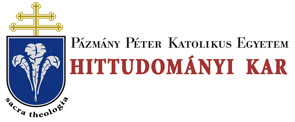Folia Theologica et Canonica, Supplementum (2016)
Szabolcs Anzelm Szijromi, O.Praem., Relationship among the Holy See, Czech-, Polish-and Hungarian Kingdoms in the 13"'-14" century
210 SZABOLCS ANZELM SZUROMI by Constitution 32 of the Council of Lateran IV is a material of the Liber Extra (i.e. X 3.5.30)82. This specification demonstrates well that the national council strove in the most diversified to regulate disciplinary way the daily life of the Catholic Church inserted into that framework that was created by the ecumenical councils. We should note that the following national council - the National Council of Bratislava in 129483 which was convoked after the Provincial Council of Esztergom (1292)84 - was again held in the presence of the papal legate, this time Cardinal Gentilis. The distinctiveness of this council is revealed mainly in its detailed regulation of the royal right of immunity85, the ecclesiastical disciplinary provisions in relation to the royal crown86, as well as the questions in regard to the provision for the vacant episcopal sees.87 Conclusion The above summarized rich historical material expresses sufficiently the extraordinary importance of the 13th—14th century. The crusade, the Mongolian invasion, the “captivity” of the popes at Avignon, moreover the general and local councils and their effects are significant elements of this epoch. The activity of the papal diplomacy and the international political background, the development of cities and the universities, moreover the new political systems have formed a new Europe in this period. The central part of Europe, which was the contemporary East border of Western Christianity had got essentially and indispensable role within this particular transforming period. From the historical sources, facts and analyses is obvious that the Czech, Polish, and Hungarian Kingdoms played a special and unique role in this period. Those institutions, initiatives and political changings, moreover ecclesiastical disciplinary and doctrinally developments had crystallized the stable basis for the advance of the 15Ih—16th century. 82 Friedberg II. 478-479. 83 Waldmüller, L., Die Synoden, 203, 206. 84 PÉTERFY, C., Sacra concilia ecclesiae, I. 127-131; cf. Waldmüller, L., Die Synoden, 202. 85 PÉTERFY, C., Sacra concilia ecclesiae, I. 156. 88 PÉTERFY, C., Sacra concilia ecclesiae, I. 157-160. 87 PÉTERFY, C., Sacra concilia ecclesiae, I. 160-166.
